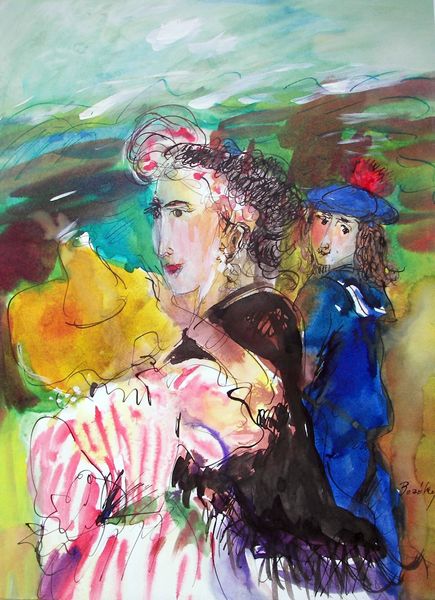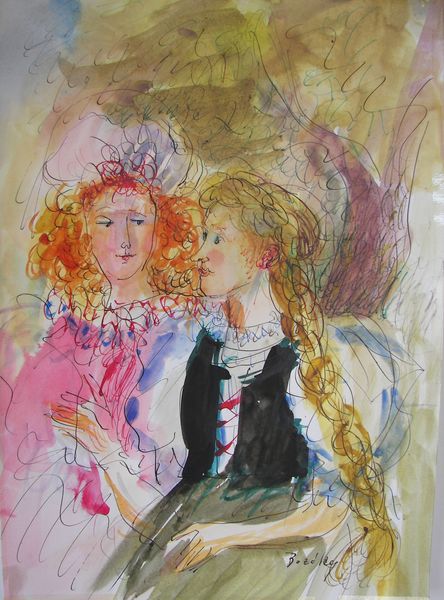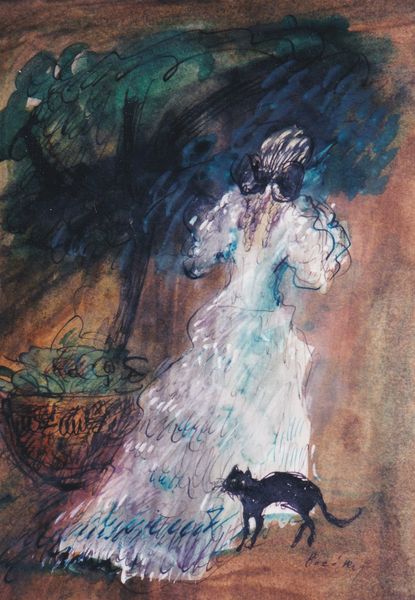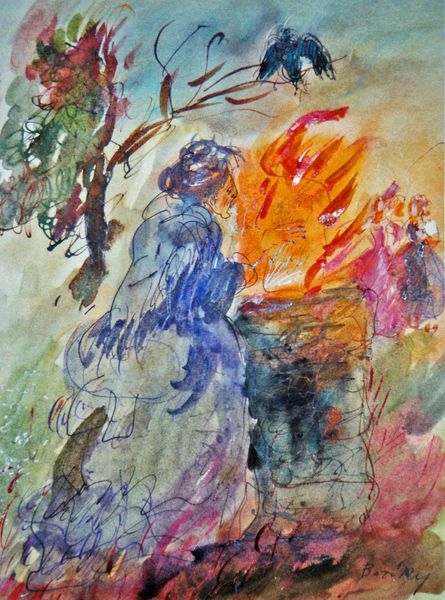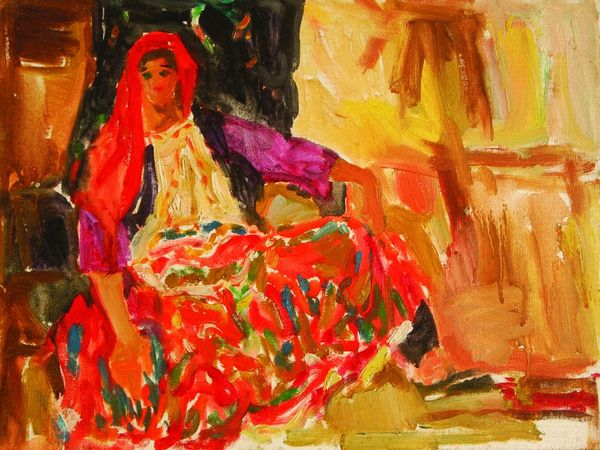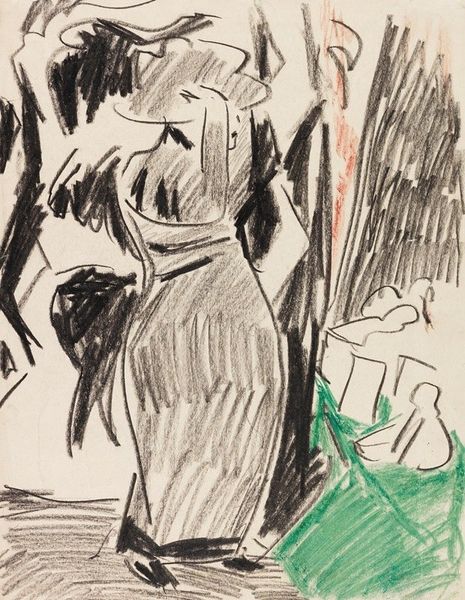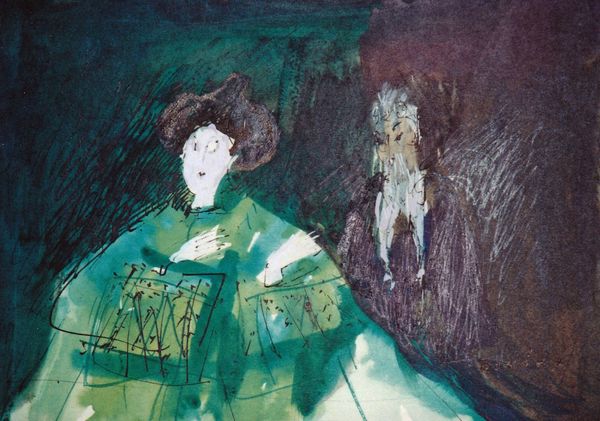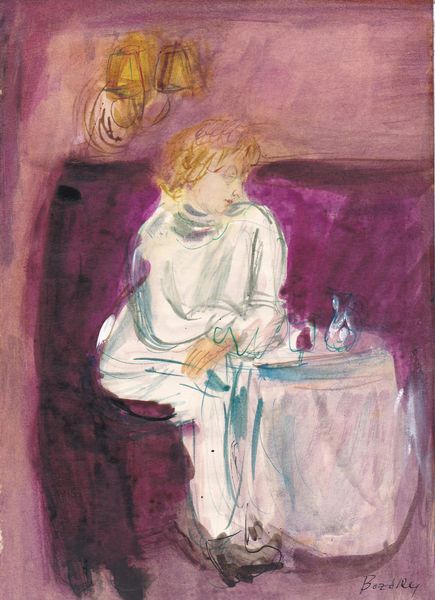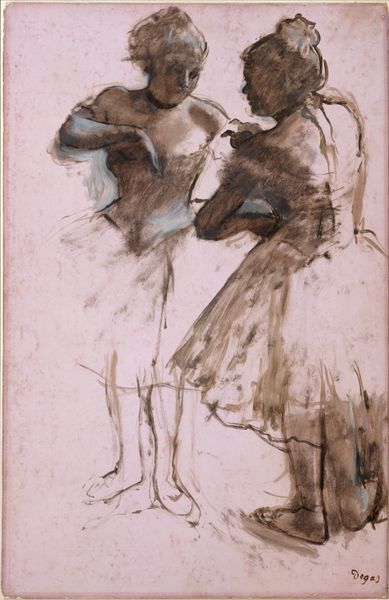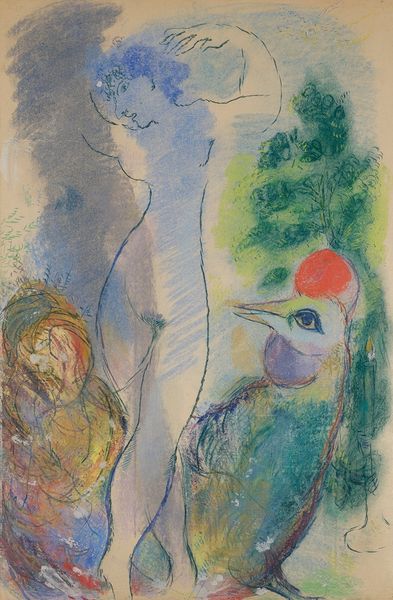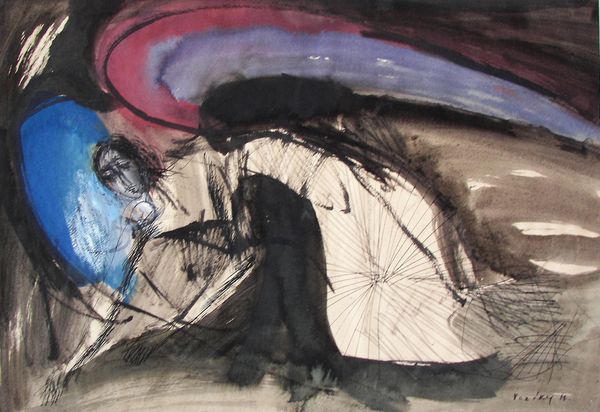
Dimensions: 34 x 24 cm
Copyright: Maria Bozoky,Fair Use
Editor: So, this is "Vörösmarty: Csongor and Tünde," a watercolor painting by Maria Bozoky from 1995. There's a striking contrast between the finished areas, like the woman in the foreground, and the almost sketched figures to the left. It feels very immediate, like witnessing the process of creation itself. What strikes you about this piece? Curator: I'm drawn to the interplay between labor and representation here. Consider the watercolor medium itself - traditionally associated with preliminary sketches and ‘feminine’ crafts. By presenting what seems like a preparatory stage, Bozoky subtly challenges the hierarchy separating ‘finished’ art from the process of making. Editor: So you're saying the incomplete sections aren't just unfinished, but a commentary? Curator: Precisely. It disrupts the illusion of seamless creation often prized in traditional art. Think about the socio-economic context: watercolor was a relatively accessible medium. Does the use of affordable materials inform how the subject matter can be portrayed in the painting? How does this contrast with traditional oil painting used to depict royalty, for example? Editor: I hadn’t considered the economics of the materials themselves. Now I’m seeing how the ‘unfinished’ quality also reflects the everyday nature of the genre-painting. Curator: Exactly! By highlighting the means of production – the application of the watercolor and the visible sketch lines – Bozoky brings attention to the artist’s hand and challenges idealized notions of artistic genius. We begin to ask ourselves what type of labour and material reality contributed to create the work itself? Editor: It’s fascinating to view what at first seems like an aesthetic choice as actually rooted in the material and the process. I definitely see this painting in a different light now, by looking at production, rather than the figures depicted. Curator: Yes, and it makes us question conventional definitions of skill, value, and the social function of art itself. The dialogue opens interesting perspective on material and artistic intent, which I appreciate.
Comments
No comments
Be the first to comment and join the conversation on the ultimate creative platform.

